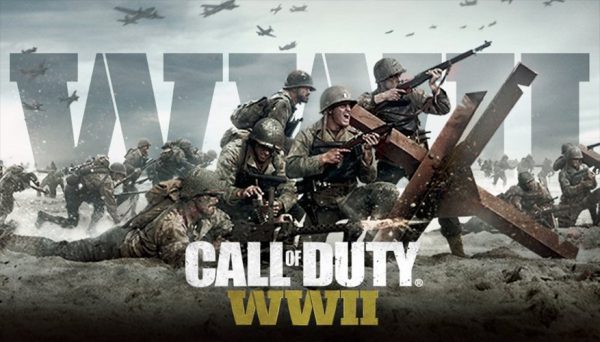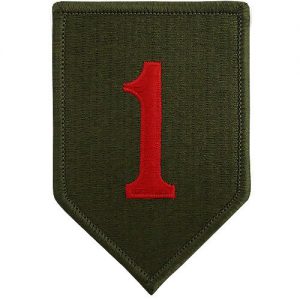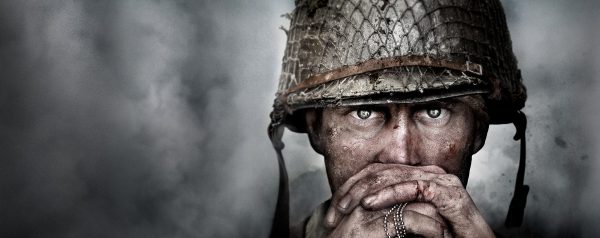Over two years in the making, Sledgehammer Games delivers a gritty, personal experience in the setting of the largest worldwide conflict in history to a new gaming generation in Call of Duty®: WWII.
Play through the story of ordinary men turned soldiers in the 1st Infantry Division as they fight to preserve freedom in the face of tyranny. Call of Duty: WWII delivers fast-paced, boots-on-ground combat through iconic locations in the European Theater.
To stay as close as possible to historical accuracy, Sledgehammer worked closely with noted author and military historian Martin K A Morgan .
Call of Duty: WWII will be released on 3 November 2017 for PS4, Xbox One and PC.
Pre-order Call of Duty: WWII now on-disc or digital download and secure your code for the Private Beta: http://www.CallofDuty.com/WWII

The 1st Infantry Division entered combat in World War II as part of “Operation Torch”, the invasion of North Africa, the first American campaign against the Axis powers. On Nov. 8, 1942, following training in the United Kingdom, men of the First Division landed on the coast of Algeria near Oran. The initial lessons of combat were harsh and many men were casualties in the campaign that followed and which stretched from Algiers into Tunisia. On May 9, 1943, the commander of the German “Afrika Korps” surrendered his force of 40,000 and North African operations for the Big Red One ended. The Division then moved on to take Sicily in “Operation Husky.” It stormed ashore at Gela, July 10, 1943, and quickly overpowered the Italian defenses. Soon after, the Division came face-to-face with 100 tanks of the Herman Goering Tank Division. With the help of naval gunfire, its own artillery and Canadian allies, the First Infantry Division fought its way over the island’s hills, driving the enemy back. The Fighting First advanced on to capture Troina and opened the Allied road to the straits of Messina.
On D-Day, June 6, 1944, the Big Red One stormed ashore at Omaha Beach. Soon after H-Hour, the Division’s 16th Infantry Regiment was fighting for its life on a strip of beach near Coleville-sur-Mer that had been marked the “Easy Red” on battle maps. As the assault progressed, the beach became so congested with destroyed equipment, the dead and the wounded, that there was little room to land reinforcements. Col. George Taylor, commander of the 16th Infantry Regt., told his men, “Two kinds of people are staying on this beach! The dead and those who are going to die! Now, let’s get the hell out of here!” Slowly, spurred by the individual heroism of many individuals, the move inland got underway.
A German blockhouse above the beach became a command post named “Danger Forward.”

After the beachhead was secured, the Division moved through the Normandy Hedgerows. The Division liberated Liege, Belgium, and pushed to the German border, crossing through the fortified Siegfried line. The 1st Inf. Div. attacked the first major German city, Aachen, and after many days of bitter house-to house fighting, the German commander surrendered the city on Oct. 21, 1944.
The Division continued its push into Germany, crossing the Rhine River. On Dec. 16, 24 enemy divisions, 10 of which were armored, launched a massive counterattack in the Ardennes sector, resulting in what became known as the Battle of the Bulge. The Big Red One held the critical shoulder of the “Bulge” at Bullingen, destroying hundreds of German tanks in the process. On Jan. 15, 1945, the First Infantry attacked and penetrated the Siegfried line for the second time and occupied the Remagen bridgehead. On Easter Sunday, April 1, 1945, the Division marched 150 miles to the east of Siegen. On April 8, the Division crossed the Weser River into Czechoslovakia. The war was over May 8, 1945.
At the end of World War II, the Division had suffered 21,023 casualties and 43,743 men had served in its ranks. Its soldiers had won a total of 20,752 medals and awards, including 16 Congressional Medals of Honor. Over 100,000 prisoners had been taken.
Following the war, the First Division remained in Germany as occupation troops, until 1955, when the Division moved to Fort Riley, Kan. (Source)






